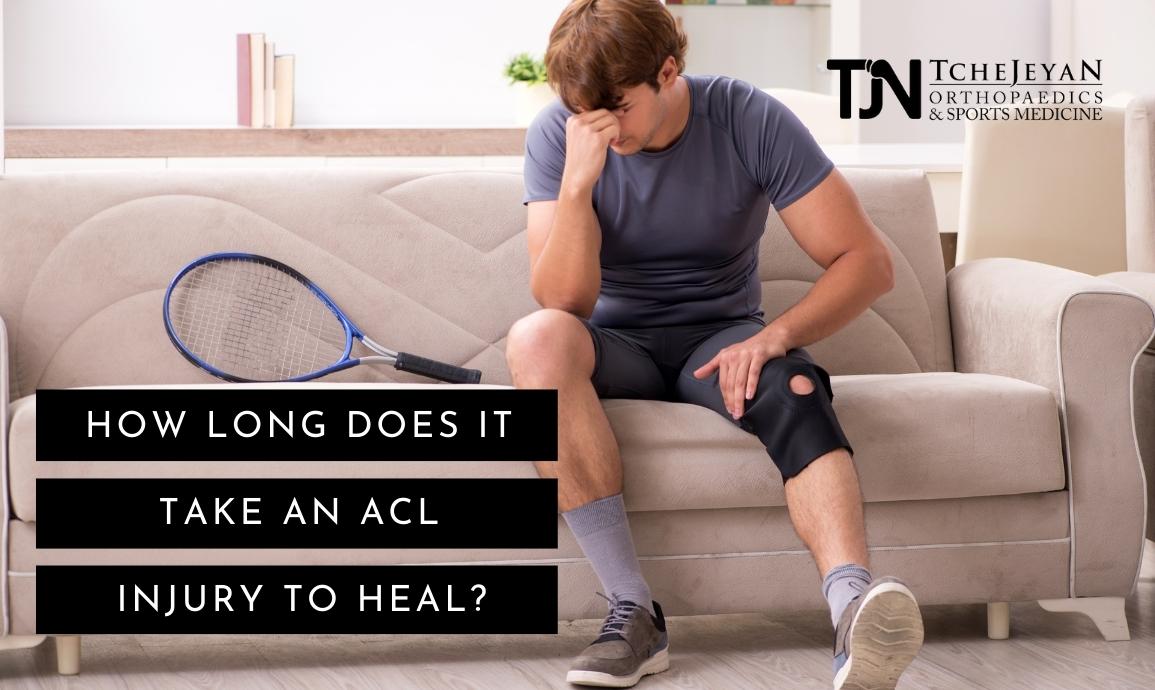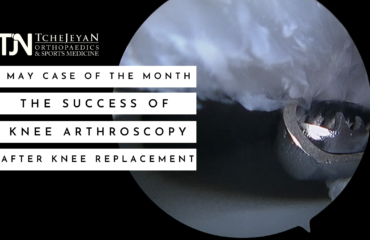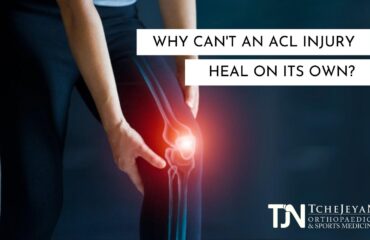The most commonly injured knee ligament is the anterior cruciate ligament, also referred to as the ACL. The ACL is one of four primary ligaments in your knee, and it connects your femur (thigh bone) to your tibia (shin bone). A torn ACL injury will not only be very painful when you put any weight on your leg, but will cause your knee to swell up and leave you unstable. ACL tears most often occur while playing sports, due to sudden stops or changes in direction. And because many of the people who suffer ACL injuries have active lifestyles, one pressing question many of them ask is: how long will I be out of commission?
The first thing you should know is that a torn ACL will not heal itself. So, while the swelling and pain may eventually abate, unless you have a very minor injury (a sprain), your options are either surgery, or living with limited activities.
Further, leaving an ACL tear untreated may lead to additional knee problems and damage to other parts of the knee. This is because the ACL keeps your knee stable. By not repairing it, your knee will be less stable, and will likely “give out” occasionally, which means that you could end up tearing other ligaments or tendons, and even damaging cartilage or grinding bone on bone. So if you opt to avoid surgery, you have to reconcile yourself not only to limiting your activities in the future, but also to the possibility that you may invite other knee problems, meaning that knee surgery may still be in your future.
Serious Anterior Cruciate Ligament Injuries Warrant Surgery
The severity of your tear will fall among one of three levels. Grade one tears, or sprains, occur when the ligament has been overstretched but can still stabilize the knee. Grade two tears are uncommon, but occur when the ligament has been partially torn and is now loose and doing little to stabilize your knee. Grade three tears involve the ligament being torn entirely in half, causing it to no longer offer any stabilization to the knee joint. These tears are considered a severe knee injury and often occur alongside additional damage to your articular cartilage, joint capsule, or collateral ligaments.
ACL Reconstruction Surgery
If your ACL is torn, reconstruction surgery is the wisest option for most patients. ACL reconstruction involves replacing the injured ligament with undamaged tissue, usually collected from your hamstring. The surgeon will remove the destroyed ACL and place the graft tissue in its place using bioabsorbable pins. At TJN Orthopaedics, our patient’s ACL reconstructions are completed arthroscopically, which only requires a tiny incision. And while this type of surgery usually allows for a speedier recovery compared to traditional ACL surgeries, it will still take some time to fully recover.
Recovery After ACL Surgery
Following your procedure, you’ll spend several hours recovering before being released. Your surgeon will provide you with an after-care plan and a prescription for pain-relieving medications. For the first one to two weeks following surgery, you will have to use crutches and keep all weight off your knee. During this time, your knee will also be in a brace to immobilize it and prevent you from damaging the “new” ligament while it begins to heal.
If your job does not require a lot of physical activity, you will probably be able to return to work once your brace has been removed and you feel strong enough to stand and walk slowly. But if your job requires physical activity, you will likely be unable to undertake those tasks for at least three months. The only exercises you should undertake during this time are the ones your physical therapist assigns you, unless your doctor clears you for additional movement.
The average ACL reconstruction patient will be able to return to more strenuous activities around six months after surgery. While this may seem like a frustrating amount of time to wait, the last thing you want to do is jeopardize your ACL reconstruction and end up back at square one. The goal is to regain the ability to once again engage in the physical activities you most enjoy, long-term and pain free. Moreover, you won’t be entirely idle: your rehabilitation plan will include exercises to strengthen your leg and repair knee mobility.
Following your doctor’s prescribed recovery plan is the best way to ensure you regain optimum mobility and strength in your knee. If you have any kind of knee injury, contact TJN Orthopaedics and Sports Medicine today, and begin your journey back to pain-free movement.




